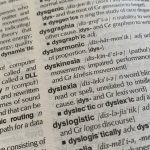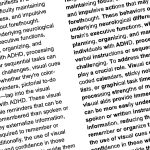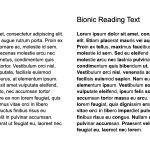Last Updated on 21/11/2025 by James Barron
Abstract
The Special Educational Needs (SEN) Code of Practice is a pivotal guide for institutions in the UK, aimed at enhancing the educational experience for children and young individuals with special educational needs and disabilities (SEND). This paper offers an in-depth overview of the Code, elaborating on its purpose, the strategic graduated approach it proposes, and its emphasis on collaboration among educators, parents, and professionals. It also categorises SEND into four main areas: Communication and Interaction, Cognition and Learning, Social, Emotional, and Mental Health Difficulties, and Sensory and/or Physical Needs. Furthermore, the essay traces the evolution of the Code, highlighting the significant amendments made in 2001 and 2014. The conclusion underscores the Code’s significance as an assurance of inclusivity, equality, and a commitment to ensuring that every child with SEND is given an equal opportunity for success.
The Special Educational Needs (SEN) Code of Practice stands as an essential foundation for schools and other institutions in the UK, ensuring that children and young people with special educational needs and disabilities (SEND) are provided with the support they need to progress and thrive in an educational environment. Its importance cannot be understated as it offers a comprehensive framework for educators, parents, and professionals to understand and address the unique requirements of students with SEND. This article will provide an overview of the SEN Code of Practice and delve into the four fundamental areas it covers.
SEN Code of Practice Summary
The SEN Code of Practice is a statutory guide for schools, parents, local authorities, health bodies, and other organisations, outlining the duties and responsibilities they must adhere to when identifying and supporting children and young people with SEND. Its primary goal is to ensure these individuals are not only offered the same opportunities as their peers but that they’re also given tailored support to ensure they can overcome any barriers to learning.
Adopting a graduated approach, the Code advocates for early intervention, maintaining that regular reviews and the utilisation of a cycle of assessment, planning, implementing, and reviewing can ensure that the right support is delivered efficiently. It emphasises a collaborative approach, where parents, educators, and other professionals work closely together to identify needs, set targets, and provide interventions. Furthermore, the Code places a strong emphasis on the views of children and young people, ensuring that their insights and perspectives are prioritised when decisions are made about their education and care.
The Four Areas of SEN Code of Practice
The SEN Code of Practice identifies four primary areas of special educational needs. These areas provide a framework for understanding the broad categories of need and assist schools and other institutions in designing and delivering effective support. The four areas are:
- Communication and Interaction: This area concerns children and young people who have difficulties with speech, language, and communication. This can range from having difficulty understanding what is being said to them, to being unable to articulate their thoughts and feelings. It also includes those with autism spectrum disorder (ASD), who might face challenges in social interaction, often stemming from difficulty in understanding and processing social cues.
- Cognition and Learning: Children and young people who fall under this category might struggle with various aspects of learning, reasoning, and acquiring skills. This can encompass a wide range of needs, including moderate learning difficulties, severe learning difficulties, and specific learning difficulties like dyslexia, dyscalculia, and dyspraxia.
- Social, Emotional, and Mental Health Difficulties: This area recognises that some children and young people experience challenges that manifest in their behaviour or emotions. This might include becoming withdrawn or isolated, displaying challenging or disruptive behaviour, or experiencing anxiety or depression. Other needs categorised here could be attention deficit hyperactivity disorder (ADHD) or attachment disorders.
- Sensory and/or Physical Needs: This category includes children and young people with visual or hearing impairments, or a physical disability that affects their learning. Additionally, those with sensory processing disorders, where the sensory signals are not organised into appropriate responses, also fall under this area.
Each of these categories highlights the spectrum of needs that children and young people might have. By categorising them in this manner, the SEN Code of Practice helps educators and support staff pinpoint where interventions might be most beneficial, ensuring that the child or young person is given the best chance to succeed.
Evolution over the Years:
- 2001 Revision: The SEN Code of Practice was revised and updated in 2001. This came alongside the Special Educational Needs and Disability Act of 2001, which strengthened the right to a mainstream education for children with special educational needs and also made it unlawful for educational providers, including schools, to discriminate against disabled children.
- Children and Families Act 2014: Arguably one of the most significant updates came with the Children and Families Act 2014. This act led to the introduction of a new SEN Code of Practice that came into effect on September 1, 2014. The changes were wide-ranging and aimed to provide a more integrated approach to care and support for children and young people with SEND from birth to 25 years of age. Key developments included:
- Education, Health, and Care (EHC) Plans: These replaced the older Statements of SEN and Learning Difficulty Assessments. EHC Plans are more comprehensive, covering education, health, and care needs in one document, ensuring a more holistic approach to support.
- Person-Centred Approach: The new Code emphasised the involvement of children, young people, and their families in decision-making processes.
- Local Offer: Local authorities were required to publish a “Local Offer” – a set of information detailing the support available for children and young people with SEND in their area.
- School Support: The previous School Action and School Action Plus categories, which were used to identify and support pupils with SEN, were replaced with a single category known as ‘SEN Support’.
- Post-2014: After the introduction of the 2014 Code, there have been further reviews and discussions around SEND provision, and there might be future updates or changes to the Code based on these reviews and the ever-evolving understanding of educational needs.
Conclusion
The SEN Code of Practice serves as a foundational guide, ensuring that children and young people with special educational needs and disabilities are recognised, understood, and supported effectively. By categorising needs into four primary areas, it offers a structured approach for professionals to identify and address challenges, ensuring that no child is left behind due to their unique requirements. The SEN Code is more than just a document – it’s a commitment to inclusivity, equality, and ensuring that every child, regardless of their needs, is offered an equal shot at success.
FAQs
How do schools and institutions ensure the SEN Code of Practice is implemented effectively in their settings?
Schools and institutions closely adhere to the SEN Code of Practice by first identifying pupils with special educational needs early, using a clear and structured process. They then adopt a graduated approach to support, termed “Assess, Plan, Do, Review”, ensuring tailored interventions and regular monitoring of progress. Collaboration is emphasised, with schools engaging parents, professionals, and the students themselves in decision-making processes. Finally, regular training and professional development ensure staff stay informed about the latest best practices and legal obligations related to SEN.
What training is provided to teachers and professionals to understand and adhere to the SEN Code of Practice?
Teachers and professionals often undergo initial training sessions to familiarise themselves with the fundamentals of the SEN Code of Practice. These sessions often include workshops, seminars, and hands-on scenarios to simulate real-world classroom experiences. Furthermore, continuous professional development (CPD) opportunities are regularly offered to update educators on the latest methodologies, tools, and legislative changes related to SEN. Additionally, many schools collaborate with specialist agencies or professionals to provide specialised training tailored to address specific needs within the student population.
How are parents equipped or educated to navigate and advocate within the framework of the SEN Code of Practice?
Parents are provided with informational sessions and workshops that offer insights into the SEN Code of Practice and its implications for their children. Schools often hold regular meetings, where parents are updated on their child’s progress and informed of available support options. Many local authorities and schools publish a “Local Offer,” detailing the SEN services and resources available, which serves as a valuable guide for parents. Additionally, numerous parent support groups and organisations offer guidance, advice, and training to empower parents to advocate effectively for their child’s needs within the framework.
What are the legal implications for schools or institutions that fail to adhere to the guidelines set out in the SEN Code of Practice?
Schools or institutions that do not comply with the SEN Code of Practice may face legal challenges, often initiated by parents or guardians advocating for the rights of their children. Non-compliance can result in the school or institution being directed to make specific provisions or adjustments by regulatory bodies or tribunals. In some cases, financial penalties or sanctions might be imposed for not meeting statutory requirements. Prolonged or severe non-compliance could lead to more intensive interventions by local education authorities or even potential closure of the institution in extreme circumstances.
Are there studies or reports that demonstrate the efficacy of the SEN Code of Practice in improving outcomes for students with SEND?
Numerous studies and reports have been conducted over the years to evaluate the efficacy of the SEN Code of Practice in relation to outcomes for students with SEND. These evaluations often compare academic, social, and emotional outcomes of students before and after the implementation of specific provisions of the Code. Many of these studies highlight positive results, especially when schools adhere closely to the guidelines and maintain regular communication with parents and external agencies. However, some reports also emphasise areas for improvement, ensuring the Code’s continuous evolution to best meet the needs of students with SEND.
The Lamb Inquiry (2009): This inquiry, led by Brian Lamb, reviewed parental confidence in the SEN system. Its findings contributed to subsequent changes in SEN provision and the emphasis on parental involvement in the SEN process.
Ofsted Reports: Ofsted, the Office for Standards in Education, Children’s Services and Skills, has regularly published reports on SEN provision. Their reports provide insights into how schools are meeting the needs of SEN students and the impact of the Code of Practice.
The Warnock Report (1978): Although this precedes the SEN Code of Practice, the Warnock Report is foundational in understanding SEN provision in the UK. It laid the groundwork for much of the subsequent legislation and guidelines, including the Code of Practice.
The Timpson Review (2019): While this review focused on exclusions in English schools, it discussed the disproportionate exclusion rates of children with identified SEN. The findings of this review indirectly comment on the efficacy of SEN provision in schools and the broader implications of the SEN Code of Practice.
How does the SEN Code of Practice advise integrating students with special educational needs into mainstream classrooms?
The SEN Code of Practice emphasises the importance of inclusive education, advocating for students with special educational needs to be educated alongside their peers in mainstream classrooms wherever possible. To support this, the Code promotes a tailored approach, where individualised support and adjustments are made based on each student’s unique needs, ensuring they can access the curriculum effectively. Collaboration between educators, specialists, and parents is crucial, with regular reviews to ensure interventions remain appropriate and effective.
How does the SEN Code of Practice address the use of technology and assistive devices to support students with special educational needs?
The SEN Code of Practice acknowledges the significant role that technology and assistive devices can play in supporting students with special educational needs. It encourages educational institutions to utilise available technology to facilitate access to the curriculum and support individual learning needs. The Code underscores the importance of tailored technological solutions, meaning that tools and devices should be chosen based on the specific requirements of each student. Furthermore, staff training and regular reviews are emphasised to ensure that the technology remains relevant and effective in addressing the evolving needs of the student.
How does the Code guide institutions in supporting students with SEND as they transition between different educational stages (e.g., primary to secondary) or into adulthood?
The SEN Code of Practice stresses the importance of smooth transitions for students with SEND between various educational stages. It mandates that institutions collaborate to create a clear and detailed “transition plan” well in advance, ensuring that the receiving institution is fully informed about the student’s needs and any support previously provided. The Code also emphasises active involvement of the student and their parents or guardians in transition planning, ensuring that their views and aspirations are central to the process. For transitions into adulthood, the focus shifts to preparing the student for further education, employment, independent living, and participation in society.
How does the SEN Code of Practice advise on funding and resource allocation for students with special educational needs?
The SEN Code of Practice outlines that local authorities have a duty to ensure that sufficient funds are allocated to meet the needs of students with SEND within their jurisdiction. Schools receive funding for SEN directly, part of which is the “notional SEN budget”, intended for the provision of support for those with mild to moderate needs. For students with more complex needs, particularly those with an Education, Health, and Care (EHC) plan, additional top-up funding is provided by the local authority based on assessments of individual needs. The Code emphasises transparency, collaboration, and regular reviews to ensure that resources are effectively allocated and adjusted based on the evolving needs of the student.
Further reading
Special Educational Needs and Disability: The Basics by Janice Wearmouth.
This book offers an introduction to SEND from a UK perspective, discussing the challenges and opportunities that teachers face in supporting students with SEND.
The SEND Code of Practice 0-25 Years: Policy, Provision and Practice by Rona Tutt and Paul Williams.
An essential read for anyone wanting to understand the SEN Code of Practice in detail, this book delves into the policies, provisions, and practices associated with the Code.
Special Educational Needs, Inclusion and Diversity by Norah Frederickson and Tony Cline.
This comprehensive guide takes a critical look at the key issues surrounding special educational needs, inclusion, and diversity in the UK.
The Department for Education (DfE)
The official site for the UK’s Department for Education, this website is a go-to resource for official documents, policies, and guidance related to SEN, including the Code of Practice.
Website URL: https://www.gov.uk/government/organisations/department-for-education
The National Association for Special Educational Needs (NASEN)
NASEN supports those who work with or care for children and young people with special and additional educational needs and disabilities. Their website offers resources, training, and the latest news in the field.
Website URL: http://www.nasen.org.uk/
SEND Gateway
An online portal offering educational resources and information related to SEND, curated by NASEN. It’s a hub for professionals, teachers, and parents seeking SEND-focused tools and publications.
Website URL: https://www.sendgateway.org.uk/
Author Profile
Latest entries
 Resources2024.01.25Animals That Start With The Letter N
Resources2024.01.25Animals That Start With The Letter N Bionic Reading2023.09.22Bionic Reading for Dyslexia: A Potential Bridge to Enhanced Comprehension
Bionic Reading2023.09.22Bionic Reading for Dyslexia: A Potential Bridge to Enhanced Comprehension Bionic Reading2023.09.21Bionic Reading for ADHD: Harnessing the Power of Visual Cues to Aid Focus and Comprehension
Bionic Reading2023.09.21Bionic Reading for ADHD: Harnessing the Power of Visual Cues to Aid Focus and Comprehension Bionic Reading2023.09.20Bionic Reading Method
Bionic Reading2023.09.20Bionic Reading Method




